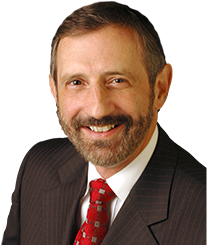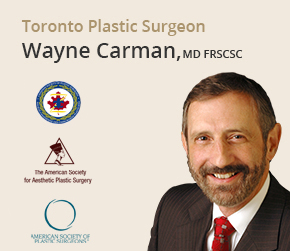The goal of liposuction is simple: to reduce body fat in targeted areas by surgically removing it. Because fat has such a soft consistency, it can be removed by applying suction through narrow surgical instruments called cannulas.




The unique softness of our body fat allows it to be selectively reduced without harming nearby structures such as muscles and nerves. Because the cannulas are very narrow with a blunt tip, the incisions for liposuction surgery are only about one centimeter long. The volume of fat removal and resultant change in body shape that can be achieved through these tiny incisions can be very dramatic.
I use this minimal-incision technique to help my liposuction patients achieve slimmer, more defined body contours.
Because liposuction can be used so selectively and efficiently, it is extremely versatile. The procedure can be done in most body areas, eliminating unwanted fat from the lower face area, including the neck, chin, and cheeks; the chest; the upper arms; the upper and lower back; the abdomen, waist, and hips; the buttocks; inner and outer thighs; and even the lower legs.
It can also be used as an alternative method for breast reduction surgery, to alleviate back, shoulder, and neck pain caused by uncomfortable, overly large breasts.
Liposuction is best suited for getting rid of fat that will not go away by other means. Think of it this way: Diet and exercise are ideal for general weight loss, while liposuction targets problem areas once you've shed the bulk of the pounds. Liposuction is itself not really intended to be a weight-loss procedure. It is ideal for people who are currently within 30 percent of their body weight goal. Liposuction candidates should also be in general good health and be committed to maintaining that health and weight. It is also important to have elastic, compliant skin that can "bounce back" evenly after the surgery.
If skin quality is poor, or if there is a lot of extra loose skin, then liposuction may not be an appropriate procedure. Alternatives can be discussed during the consultation visit, and sometimes liposuction is combined with a tightening procedure (a facelift, for example) to get the best improvement in contour and shape.
Without the excess fat, the skin in the treated areas can more easily mold to the underlying body contours, achieving greater definition. Depending upon which part of the body the liposuction is targeting, this can lead to a more defined jawline, a slimmer waistline, sleeker limbs, or better muscle visibility.
In the case of breast reduction, it can reduce the feminine breast appearance that men can develop, called gynecomastia. It is also very effective in reducing the size of overly large or asymmetric breasts for women. As a breast-reduction method, liposuction works extremely well. Because it requires only small incision sites, the scars are minimal, and the healing risks are lower than with more traditional, longer incision methods.
Remember that liposuction is simply the removal of fat; it does not change the look or tone of the skin above it, so any cellulite or stretch marks that exist before the procedure will still be there after. Subsequent surgery, such as a tummy tuck, may eliminate redundant sagging skin that bears such marks, but you should talk about your post-liposuction options during your consultation if stretch marks or excess skin are a concern in addition to the excess fat.
On the day of surgery, before the patient enters the operating room, I review the procedure and mark out the areas to be treated. Pre-op photos are taken for later reference. I find that this final review and planning step allows an opportunity for patients to point out any lingering concerns and ensures that the procedure is carried out efficiently.
Once in the OR, patients are given a general anesthetic and positioned appropriately for access to the targeted areas. The entire procedure is done in a sterile field to minimize any risk of infection. Once the incisions are made, sterile saline solution (tumescent solution) containing a very small amount of local anesthetic is infiltrated into the fatty layer. This fluid helps to loosen the fat, keeps bleeding to a minimum during the surgery, reduces bruising afterward, and minimizes any pain right after the procedure. Tumescent liposuction is used by most experienced surgeons because of its many benefits.
Once the cannula is inserted, it is moved back and forth in a firm but controlled manner to loosen the fat inside. This motion separates it enough so that it can be "vacuumed" out.
Once the procedure is completed, the small incisions are sutured with a few dissolving stitches, and a compressive garment is applied to control swelling and bruising.
Patients are then taken to the Recovery Room where a nurse monitors their status and helps them through the recovery stage. Once patients are mobile and comfortable, they are given their final instructions and discharged with an accompanying adult.
Every effort is made to remove excess fat gently and efficiently but some swelling and bruising in the days after the procedure are unavoidable. Plan for about a week of down time for recovery. Everyone is different, and the degree of soreness patients will experience depends upon how much work was done and how resilient they are to the stress of surgery. Most people return to normal daily activities after a week of rest. Anything athletic takes longer, though. I advise my patients to stay away from the gym for about six weeks to avoid creating swelling that lingers.
Prescriptions for an antibiotic to prevent infection and an analgesic to control pain are given to each patient before surgery. Our goal is to make the experience of surgery as safe and as comfortable as possible.
An important part of the recovery process is the need for constant, gentle compression in the surgical areas. A compression garment is chosen for each patient and put on while they are still under anesthesia. Patients are instructed to wear the garment 24 hours a day to minimize swelling and help to mold their new body shape. The garment may be removed to bathe or for a short break, but most patients find that the support it provides makes it more comfortable to have it on rather than off.
About a month after the liposuction session, the swelling should be much improved, though probably not completely resolved. Results will already be visible, showing a more streamlined shape and less volume in the treated areas. It takes about eight weeks for the final shape to stabilize. At that point, all activities are back to normal - even strenuous exercise.
The best part about liposuction is that the results are permanent. The change in body contour will always be improved. The problem areas do not come back. The only thing that can change is overall body weight, so maintaining a healthy weight is essential to getting the most benefit and long-term enjoyment out of the procedure. Even if patients do gain weight in the months and years after liposuction, their body shape will still look more sleek and streamlined than it would have if they didn't have the liposuction performed.
For more information about liposuction available at my Toronto practice, call (416) 322-7108. Request a consultation, and come with any questions you might have about the surgery and what it could do for you.
For many of us, the tummy can be the most challenging area to reduce and tone with regular physical exercise and diet. There are a number of reasons why we struggle with this area. These reasons may include age and gravity, a previous C-section or other abdominal surgery, former obesity with subsequent weight loss but most commonly, a genetic tendency to store body fat in the abdomen. Abdominal liposuction is popular for both women and men and is one of areas the most frequently treated at my private Toronto clinic. Abdominal liposuction is popular for both women and men and is one of areas the most frequently treated at my private Toronto clinic.
For women, fatty deposits that accumulate on the outer thigh can be very stubborn to reduce and tone. The term “saddle bag” is often used to describe this contour problem. It’s an unkind description but it is a term that is commonly used and does conjure an image. Reducing this area gives a sleek look to the outer thigh and shows off tighter jeans really well.
"Love handles" can be an issue for both men and women. The extra roll that gives patients a square, chunky, short-waisted look is a very common problem. It gets worse with age and is almost impossible to control with diet and exercise. Fortunately, the skin in this area is very resilient, so liposuction surgery can make a very significant difference with little risk of unevenness or surface irregularities.
Like the outer thighs, the inner thighs are often a concern among women seeking a sleeker contour. The skin in this area is very soft and delicate. It is important not to overdo liposuction in the inner thigh or dents and contour problems could arise. A conservative approach can safely reduce inner thigh fullness. Wearing a supportive garment after surgery helps to ensure a smooth graceful contour.
Liposuction of the inner thighs is often performed at the same time as treatments on the inner knees. The knee area is another common region for excess fat accumulation. The results of surgery are more subtle but it’s a part of the body that is often exposed, so having a smooth contour here is important. Women who have their inner knees done have more freedom to wear styles that would otherwise be less flattering.
The front part of the thighs is another part of the body that can be resistant to toning and exercise. Working the muscle groups in this area can even make the thigh look bigger. The goal for most patients asking for a liposuction procedure in this area is to create a smooth contour with an ideal amount of fat removal. Dr. Carman offers expert judgment on this area, as removal of too much fat can result in skin irregularities or an unnatural contour.
The area of the buttocks that generally creates the most concern in patients is the accumulation of fat just below the horizontal crease at the lower contour of the buttock. It’s called a "banana roll" because that’s what it looks like. It’s an area that must be treated cautiously with liposuction or contour deformities can occur. Sometimes it’s better to just leave it alone.
Fat on the lower legs and ankles can also be treated liposuction. It is less common to have excess fat in these areas, but some people have a genetic tendency for heaviness in the lower legs and exercise does little to help reduce it. The only difference in the recovery following the treatment of the lower leg is that compression must be worn for a longer time as swelling tends to be somewhat more stubborn.
Liposuction for the arms is performed on the upper arm between the armpit and the elbow. This is an area that can be tricky. Surgical reduction or tightening of the upper arm leaves significant scars so most patients are not candidates for this approach. Liposuction, on the other hand, leaves no significant scar and can improve definition while reducing volume very effectively. It is important to have good skin elasticity to enable healing with a smooth, snug contour. Patients generally should have modest expectations to avoid disappointment after surgery but I find that it doesn’t take much of a volume reduction to create a more graceful upper arm contour.
Stubborn fat deposits under the chin, and in the cheeks and jowls are very effectively treated by facial liposuction. It is a very safe procedure that is performed under a local anesthetic as day surgery. There is a single dissolving suture under the chin afterwards, making it a very efficient and conservative way to improve facial contour. The result is a look that is rejuvenated and toned, but in a way that your friends can’t quite figure out. It is often a good alternative for patients who are not quite ready for something more major like a full-face lift.
Liposuction breast reduction is a very different approach to other reduction techniques. It provides an effective option for women who feel burdened by the proportions of their breasts but don’t want the scarring associated with traditional surgical methods. It is typically performed as day surgery and is considered a very low risk technique for breast reduction. The relief from shoulder and neck strain following the reduction of overly large breasts can result in major positive changes in lifestyle and physical activities.
Liposuction removes excess fat in the male breast area giving a firmer chest and more muscle definition. It is a condition that is embarrassing for male patients and can drastically affect lifestyle and clothing choices. Gynecomastia can often be treated with liposuction with excellent results. Beach holidays no longer end up being a source of anxiety.
Liposuction of the lower face is a very efficient way to reduce jowl fullness as well as a chubby double chin. Many patients think that a face lift is the only way to recontour the cheeks and chin. A face lift involves fairly extensive surgery and works best for those patients with loose, saggy skin. Younger liposuction patients who have firmer, more resilient skin can achieve excellent results with liposuction, which is a much more conservative approach.
I usually perform facial liposuction under local anesthetic. It requires a tiny incision under the chin which is closed with one dissolving stitch! My patients wear an elastic wrap for a week or so to prevent swelling and help the remodelling process in the lower face. Bruising and swelling are minimal. Most people are back to work after a week with no obvious signs of having had recent surgery.
I find that for the right patient, facial liposuction can provide dramatic results with a fraction of the risk and inconvenience of face lift surgery.
If you've ever felt self-conscious about your legs, and avoid garments that show your legs, then knee liposuction can be a way to regain confidence in your appearance. The fat deposits in the inner knee area can be an awkward genetic trait. It is also an area that can be very difficult to reduce by diet and exercise. Surgical contouring with liposuction is really the only practical way to improve this area - fortunately, it works very well.
Liposuction can be effectively used on most areas of the body, but the inner knee is often overlooked. Knee liposuction gives women more confidence to wear garments that reveal the knee, particularly shorts or swimwear in the summer. The procedure safely restores a more youthful leg line in a way that looks very natural.
Please remember that the entire knee area cannot always be improved by this procedure. Less can be done to improve the look at the front of the knee as it blends into the thigh. Excess skin is a more common problem in this area and liposuction is not designed to improve areas of skin looseness. Most patients have enough skin elasticity on the inner part of the knee to expect a good outcome from liposuction in this area. There are some limitations to how much improvement one can expect in the knee area. Like the upper arm, our options are more limited as surgical scars must be avoided. It is really important for patients to be fully informed so that their expectations are met and any possibility of disappointment avoided.
As with most liposuction procedures, patients are asleep under a general anesthetic and go home the same day. Knee liposuction typically removes less volume than liposuction in other body areas. Because the area has less fat, I use a smaller diameter liposuction cannula compared to the instrument size used in a bigger area like the upper thigh. This allows the fat to be removed with more control and less trauma giving a smoother, more predictable result. I usually make a small incision in the skin crease behind the knee which is closed with a few dissolving stitches. The amount of fat to be removed is carefully planned and the volumes recorded to ensure symmetry between left and right sides. It's a blend of technique and aesthetic judgment as over reduction can leave areas of hollowness, which is not an attractive result. After surgery, compressive stockings are worn to reduce swelling and speed up the healing process. Most patients need 4 to 5 days to rest before they are comfortable enough to get back to their daily routine. It takes about a month before patients are back to the gym - too much strenuous activity too early just increases swelling and slows down healing. I see my patients for their check up visits and individualize their instructions based upon how quickly they heal. Everyone is a little different.